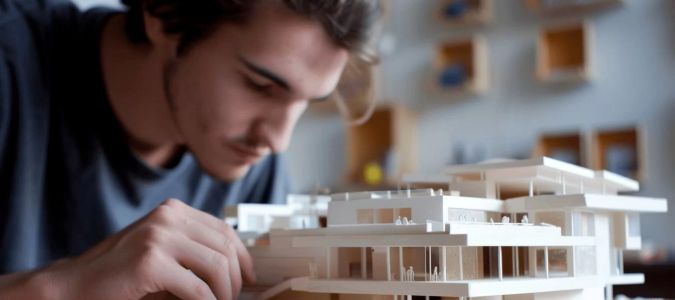The world of architecture and design can be confusing, especially when it comes to understanding the distinctions between an architect and a designer. While both roles play a critical part in the creation of spaces, they approach the process differently and bring unique expertise to the table. In this article, we will explore the key differences between architects and designers, including their responsibilities, skills, education, and the decision-making process behind choosing the right professional for your project.
2. Architect vs. Designer: Key Differences
The main difference between an architect and a designer lies in their scope of work and training. Architects are licensed professionals who focus on the overall design and structural integrity of buildings. They are responsible for ensuring that a structure is safe, functional, and meets legal requirements. Designers, on the other hand, often focus more on the aesthetic aspects of spaces, including interior design, furniture selection, and layout optimization.
In short, architects are generally involved in the planning and construction phases of a building, while designers are more concerned with the visual appeal and interior functionality of spaces. Both roles are essential, but their expertise serves different needs depending on the type of project.
3. Roles and Responsibilities
Architects
Architects play a critical role in the design and construction of buildings. They are responsible for:
- Creating detailed blueprints and plans for a building's structure.
- Ensuring that a design complies with local zoning laws and safety codes.
- Managing construction processes and liaising with contractors and engineers.
- Providing oversight and making adjustments as necessary throughout the construction process.
Designers
Designers, whether interior designers or product designers, focus primarily on the aesthetic and functional aspects of spaces or objects. They are responsible for:
- Designing and selecting interior furnishings, materials, and layouts.
- Improving the user experience by optimizing space functionality and flow.
- Ensuring that the design is visually appealing and aligns with the client's preferences.
- Collaborating with architects to ensure that the interior design complements the overall architecture.
4. Skills and Education
Architects and designers also differ in terms of the skills and educational backgrounds required for their respective roles.
Architects
To become an architect, one must typically complete a professional degree in architecture, followed by several years of internship under the supervision of a licensed architect. Afterward, they must pass a licensing exam to become a registered architect. The education and training focus heavily on engineering, mathematics, building codes, and construction management.
Designers
Designers typically have degrees in fields such as interior design, industrial design, or graphic design. They may also pursue certifications or diplomas that focus on design software, materials, and color theory. The training is more centered around aesthetics, user experience, and the practical application of design principles.
5. Real-Life Examples: Architect and Designer in Action
Let's consider a real-world example to highlight the differences. Suppose you are building a new office building. An architect would be responsible for creating the overall design, ensuring structural integrity, obtaining permits, and overseeing the construction. Meanwhile, a designer would work on the interior layout, selecting colors, furnishings, and ensuring that the workspace is functional and comfortable for the employees.
Another example would be if you were renovating your home. An architect may help design an extension or reconfigure the structure of your home, while an interior designer would focus on optimizing the space for your lifestyle, choosing materials and decor that suit your taste, and making the rooms feel cohesive.
6. Making the Right Choice: Architect or Designer?
Choosing between an architect and a designer depends largely on the type of project you are undertaking. If you are building or renovating a structure that requires detailed planning, structural changes, or compliance with building codes, an architect is the right professional for the job. However, if your focus is on the interior design and functional arrangement of a space, a designer would be a better fit.
In many cases, both professionals work together. For instance, a designer may collaborate with an architect to ensure that the design elements work seamlessly with the building's overall architecture.
7. Conclusion and Next Steps
Understanding the difference between an architect and a designer is crucial for making informed decisions about your project. Whether you're building a new home, renovating your office, or redesigning a space, it's important to consider the scope of your needs and select the right professional. If you need expert assistance with your architectural or design project, feel free to explore our services at 10 Jay Street.
For more information or to schedule a consultation, visit 10 Jay Street today!








